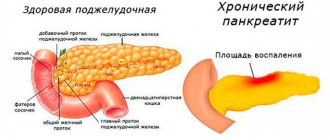For many mothers, organizing a child’s nutrition after 1 year is a big problem. On the one hand, the list of permitted products expands compared to 6-8 months of age. On the other hand, many children are extremely picky and tend to refuse food and eat in very small portions.
Also, feeding a child can be difficult due to allergic problems. Therefore, the recipes that the mother chooses for preparing dishes should include healthy and fresh products, so as not to harm the baby’s health and instill proper gastronomic habits from childhood.
Do I need to wean at one year?
If you continue to feed your baby with your milk, then do not rush to wean him from the breast. There are studies confirming the value of episodic breastfeeding even at this age, because... you give the child not only food, but also a feeling of peace, security and confidence in his mother’s love. In addition, milk contains protective antibodies that help the baby resist infectious diseases.
It is almost impossible to overfeed with breast milk (this is one of its unique properties - the ability to “automatically” adapt to the needs of the child), i.e. The mother produces the amount of milk and with the properties that the baby needs at the moment. But this does not apply to formula feeding. So if your child is an artificial child, measure the volumes strictly in accordance with his age and the pediatrician’s recommendations.
My family's 5 week menu
I realized a long time ago that meals need to be planned, otherwise the family begins to eat quick, unhealthy snacks or constantly the same dishes. If there is no healthy food in the cupboard or refrigerator, then the child will eat something sweet or unhealthy. That's why we don't buy chips, crackers, carbonated drinks, etc. We rarely buy candy, cookies, marshmallows and dried fruits, although I try to take healthy analogues, but advertising from my son’s friends sometimes works better than all my arguments for usefulness and health. Plus, grandmothers don’t refuse my child anything, he wants a Pepsi, he gets a Pepsi, and no matter how much I swear and stamp my feet, I can’t help but take them to relatives, and in the end I spend my work with the baby at home.
The menu was created for 5 weeks for winter, I haven’t changed it for about a year, I adjust it to the season as I go. Namely, it says pumpkin cupcake, it is logical that there is no pumpkin yet, it’s not the season, so it’s just another fruit. Well, something like this! I think it's clear! It says herring under a fur coat - I make a regular salad of cucumbers and tomatoes. I'm just too lazy to write before summer! There are too many other things to do, I can get by with this menu.
Snacks are also taken into account, but it’s not a fact that we will eat them on schedule, it’s just so convenient for me to make purchases, I know approximately how many snacks I need for the week, I buy them, and then they don’t eat them, so they lie there and wait. Moreover, the menu is larger than the winter version, because in the summer there is a greater variety of snacks from fruits and vegetables, you can eat a cucumber or a peach. The youngest child generally snacks on tomatoes.
And lastly, it may seem to you that my menu is monotonous, but I remind you that I compiled it for myself and my family, based on preferences and habits. It is clear that everything may be different for YOU. Therefore, when I write a menu for my family, it’s better to create it myself.
CLICK ON ME!!! Menu for 5 weeks for the Levchuk family!
CLICK ON ME!!! Menu for 5 weeks for the Levchuk family!
CLICK ON ME!!! Menu for 5 weeks for the Levchuk family!
CLICK ON ME!!! Menu for 5 weeks for the Levchuk family!
CLICK ON ME!!! Menu for 5 weeks for the Levchuk family!
How much cottage cheese, kefir, yogurt to give a child per year
So, the first group of products necessary for a baby who has crossed the one-year mark is dairy products. They contain proteins, fats, vitamins, and minerals. What to choose from the variety of dairy products: mixtures (so-called follow-up formulas), milk, cottage cheese, yogurt, kefir or cheese? The use of “follow-up formulas” (if the child is “artificial”) should hardly be abandoned, despite the indicated age - “from 6 to 12 months.”
This is due to the fact that in recent years, many nutritionists have increasingly recommended postponing a baby’s introduction to whole milk until a later age (2-2.5 years) due to the increased number of cases of food allergies to cow’s milk protein.
Any yogurt is prepared on the basis of yogurt starter - Bulgarian bacillus and thermophilic streptococcus. It is these lactic acid cultures that make the tasty product also healthy. However, the healing properties of these bacteria are preserved only in “live” or “short” yoghurts that have not undergone heat treatment. The shelf life of such yoghurts does not exceed 30 days at temperatures from + 2 to +8 “C. “Long” yoghurts can be stored for more than three months, not even in the refrigerator. Their life can be extended either with the help of preservatives or through heat treatment. All useful minerals and vitamins are preserved, and bacteria die. Most yoghurts contain natural fruits; their taste in some cases compensates for the lack of sugar or its substitutes.
Kefir contains lactic acid bacteria, as well as bifidobacteria, which regulate the normal microflora of the human gastrointestinal tract, which not only improves digestion, but also has a positive effect on the immune system.
However, it should be remembered that fermented milk products are highly acidic and in large quantities are not very beneficial for the child’s body. Studies conducted by the Institute of Nutrition of the Russian Academy of Medical Sciences (RAMS) have shown that consumption of kefir in an amount of 400 ml by children 6-8 months old can lead to pinpoint hemorrhages in the intestines (accompanied by loss of hemoglobin and iron). Don’t forget about this and introduce kefir into the diet of 6-7 month old babies. According to new recommendations from the Institute of Nutrition of the Russian Academy of Medical Sciences, this product can be given to children from 9-12 months in an amount not exceeding 200 ml per day.
Fermented milk products also include yogurt.
Kefir is a traditional dietary food product. To produce kefir, kefir grains are used, which are a symbiosis of many microbes (lactic acid streptococci, lactic acid bacilli, acetic acid bacteria, flavor-forming bacteria and yeast). Consuming kefir tones the cardiovascular and nervous systems, normalizes and improves kidney and intestinal function.
A one-year-old baby can only receive specialized children's milk (not cream) yogurt with a moderate content of fat and carbohydrates. Such yoghurts are produced in baby food factories, they have a limited shelf life (several days) and are sold in baby food departments. They can be given to children from 8-12 months.
Cottage cheese as a source of protein and calcium is necessary for a child, but within reasonable limits - about 50 g per day. It must be remembered that due to the high protein content, cottage cheese is not a very easily digestible product. In addition, too much protein in the diet is not at all harmless - in some children this can lead to a decrease in appetite, and in the future it will lead to an increased risk of atherosclerosis1, obesity, and other disorders.
Sour cream, cream and cheese are used in the diet of a baby in his second year of life in small quantities (just like cottage cheese and yogurt, it is better to give them not every day). Sour cream is added to ready-made dishes. It is advisable to grind the cheese (for example, on a grater). This product can be given in combination with pasta, or can be used as a separate dish.
Dinner
Dinner at 19.00 most often becomes the baby's last meal. Afterwards you can play a little more, read, brush your teeth, take a swim and go to bed. Sometimes before going to bed, children need to eat milk or kefir.
Liver paste
Ingredients:
- Chicken liver – 500 g;
- Carrots – 300 g;
- Onion – 1 piece;
- Butter – 50 g;
- Bay leaf.
Boil the liver, onions and carrots in water with the addition of bay leaves. Grind until pureed, add butter, mix.
Meat soufflé
Ingredients:
- Veal – 100 g;
- Bread – 1 slice;
- Egg – 1 piece;
- Water - half a glass;
- Butter – 50 g.
Grind the meat in a meat grinder, mix with soaked bread, yolk and beaten egg white. Place in a greased mold and bake at 180°C in the oven for 20-25 minutes.
What kind of porridge to cook for a child
The next group of products is cereals, which are a source of carbohydrates, vegetable proteins, vitamins, and minerals. In terms of nutritional value, buckwheat and oatmeal rank first. Much has already been written about the influence of semolina porridge, beloved and still widely used in the nutrition of young children. But it is necessary to remember: semolina is a cereal containing gluten (a protein in cereals that can cause allergies, especially in infants). And there are not so many vitamins and minerals in semolina. Therefore, you should not get carried away with such a product.
Rice is very easily digested and absorbed by the body. It is widely used for children with digestive problems. Unfortunately, the content of vitamins (for example, E and B1) and minerals (for example, potassium) in rice is even lower than in semolina.
Corn also cannot boast of a particularly valuable vitamin and mineral composition. In addition, it contains a lot of starch. But corn is one of the sources of selenium. After a long period of cooking, this porridge will be easily digested by the baby.
What is the menu?
Table of contents:
The menu is a list of recipes and dishes of balanced, nutritious nutrition for every day. The child's menu should include 3 main meals and 2 snacks. Every meal is a building block in developing a child's healthy eating style. How the parents feed the child determines his future preferences in independent choice of food and nutrition.
Menus may be different, we list the main menus for a child:
Risotto with butternut squash
- Menu for a healthy child of different age groups
- Treatment menu focused on preventing disease or improving the course of the disease
- Seasonal menu, when the characteristics of the growth of fruits and vegetables in the region in which the family lives are taken into account
- The menu for allergy sufferers also belongs to the treatment menu, but we will highlight it separately. The menu includes only foods that the baby can eat, without negative consequences for the baby’s body.
- I would also like to make a special mention of the menu for pregnant and nursing mothers.
- There are also food-specific menus, dairy menus, iron menus, etc.
- The menu also comes with one-time, two-time, three-time, four-time and five-time meals
- We also note the kindergarten menu, which is compiled according to SanPin standards with the support of the Ministry of Education. In each region of our large homeland, this menu will be different, sometimes the menu differs within the same city, because there are private kindergartens where parents pay for children’s meals to a greater extent than in a regular kindergarten.
But seriously, the menu for a child in pediatrics is divided into only 2 types, which in turn are compiled into different age groups:
- Treatment menu;
- Menu for a healthy child.
The treatment menu is also compiled according to disease, because not all foods can be eaten. Therefore, there are healing tables or diets, about 15 of them, compiled by Professor M.I. Pevznerov, who worked in the USSR in the field of dietetics and gastroenterology. These treatment tables are general recommendations, but there are also menus or diets compiled for specific diseases, examples are given below.
Fruits and vegetables in the diet of children after one year
For a child of the second year of life, it is useful to add fruits or vegetables to porridge (for example, apples in rice, pumpkin in oatmeal).
At this age, it is already possible to expand the range of fruits offered to the baby (fresh and in the form of juices, purees) with oranges, apricots, strawberries, kiwis (in limited quantities; if juice - 100 ml, if pureed - 100 ml).
Gooseberries, cherries, currants, cranberries, raspberries, lingonberries, and pureed blackberries are very useful. A biologically valuable vitamin drink can be prepared from rose hips,
Grapes have the ability to enhance fermentation processes in the intestines. In addition, it oversaturates the child’s diet with carbohydrates. Combined with the relatively low vitamin content, this makes it a product intended for older children.
The vegetable menu can be enriched with beets, turnips, green peas, and beans. Legumes should be given with great care and only in a well-steamed, thoroughly chopped form, since, despite being rich in vegetable proteins, these vegetables contain coarse fiber. It causes increased gas formation and significantly enhances intestinal motility, as a result of which the child’s stool becomes more liquid.
Dosages and volumes
A 1-year-old child's diet should be varied and nutritious. In this case, the principle applies very well: better quality is better than more. The volume of food per day should be about 1.2 liters. In this case, food intake should not exceed 300 ml, because this figure characterizes the volume of the baby’s stomach. If you count it in calories, then the baby should receive approximately 100 kcal for every kilogram of weight.
Daily amount of main products on the menu:
- Dairy products - up to 600 ml, of which 200 ml should be kefir, and 50 grams should be cottage cheese.
- Eggs – half a chicken or a whole quail, hard-boiled.
- Meat – up to 100 grams per day.
- Fish – up to forty grams per meal, up to two times a week.
- Porridge – up to 200 ml.
- Oil – vegetable (6 grams), butter (up to 15 grams).
- Vegetables – up to 200 grams.
- Fruits – 100 grams.
- Berries – 15 grams.
- Water – without limitation, it should be given on demand, and do not replace all the liquid with compote and tea.
How to cook meat and fish for a 1 year old child
Meat products play an important role in children's nutrition. They are given in the first half of the day (taking into account the longer period of time required for absorption), and not only in the form of minced meat and meatballs (as for children of the first year of life), but also in the form of steamed cutlets.
The diet is expanded with lean pork, offal (especially tongue), chicken, rabbit meat, and turkey. Waterfowl meat (ducks, geese), fatty pork and lamb are not recommended due to the difficulty of digesting them. And, of course, no sausages, frankfurters or small sausages.
You can also add low-fat fish (hake, pollock) to your child’s diet. Fish should be given 2 times a week, provided that there is no allergic reaction to it.
Fish contains large quantities of useful minerals and vitamins. It can be boiled, stewed with vegetables, made into cutlets and meatballs, soufflé.
And caviar, so beloved by many adults, can be given only occasionally and with great caution (it can cause an allergic reaction).
Dinner
Lunch usually starts at 12.30. The child will eat better if before lunch he walks in the fresh air, pumps up on the swing and plays with other children. For the first course, soup is usually prepared, for the second - a vegetable dish with meat or fish cutlets.
Borsch
Ingredients:
- Beetroot – 200 g;
- Potatoes – 300 g;
- Cabbage – 300 g;
- Carrots – 330 g;
- Zucchini – 300 g;
- Onion - half;
- Bay leaf;
- Greenery.
Chop cabbage and onions, grind beets and carrots, cut potatoes and zucchini into small cubes. Add water and cook until done. 5 minutes before the end of cooking, add bay leaf. After the soup is poured into bowls, garnish the dish with herbs or thin slices of fresh carrots.
Fish soup
Ingredients:
- Red or white fish – 200 g;
- Potatoes – 2 pcs;
- Carrots – 1 piece;
- Rice - a third of a glass;
- Bay leaf;
- Greenery.
Cut potatoes and carrots into 1*1 cubes and cook in water. A few minutes before the end of cooking, add bay leaf to the broth. At the same time, steam the fish, remove bones and skin. It is better to cook the rice separately. Combine with the rest of the ingredients and mix. If the potatoes and carrots are too large, it is better to grind them or cut them into smaller pieces. Before serving, garnish with herbs.
Turkey meatballs
Ingredients:
- Fillet – 500 g;
- Cabbage – 250 g;
- Small onion – 1 piece;
- For the gravy:
- Vegetable puree or juice – 1 glass;
- Water, vegetable broth, meat broth - 2 cups;
Grind the skinless vegetables to make a puree. Mix the flour with water (broth, broth) thoroughly so that there are no lumps left. Bring the vegetable puree to a boil, pour in the liquid with mixed flour, bay leaf, dill, cook for another 10 minutes. Decant and it turns out to be gravy.
Grind the meat, cabbage, and onion in a meat grinder, prepare the minced meat and form it into balls. Place them in boiling broth and cook for 25 minutes.
Steamed fish pots
Ingredients:
- Sea sole fillet (can be replaced with other white fish) – 700 g
- Carrots – 350 g;
- Bread – 200 g.
Grind the fish, carrots and bread through a meat grinder, shape the resulting minced meat into cutlets and steam for 25 minutes.
Which eggs are better: chicken or quail?
Eggs contain easily digestible protein, valuable amino acids, vitamins, micro and macroelements. One egg should be included in the daily diet of a baby in the second year of life (except in cases where the child suffers from a food allergy to chicken protein).
This can be a whole egg, a steamed omelet, or eggs added to culinary products (cottage cheese, pancakes). Under no circumstances should children be given raw eggs.
Quail eggs differ from chicken eggs not only in their higher protein content (with more amino acid tryptophan), but also in their higher fat and cholesterol content. However, they can be a good alternative for children with chicken protein intolerance (1-2 pieces a day or every other day).
From the books Annabelle Carmel Menu for a baby and Eating deliciously
CLICK ON ME!!!! Menu for the baby. Annabelle Carmel
CLICK ON ME!!!! Menu for the baby. Annabelle Carmel
CLICK ON ME!!!! We eat deliciously. Annabelle Carmel.
CLICK ON ME!!!! We eat deliciously. Annabelle Carmel.
CLICK ON ME!!!! We eat deliciously. Annabelle Carmel.
CLICK ON ME!!!! We eat deliciously. Annabelle Carmel.
CLICK ON ME!!!! We eat deliciously. Annabelle Carmel.
CLICK ON ME!!!! We eat deliciously. Annabelle Carmel.
CLICK ON ME!!!! We eat deliciously. Annabelle Carmel.
CLICK ON ME!!!! We eat deliciously. Annabelle Carmel.
CLICK ON ME!!!! We eat deliciously. Annabelle Carmel.
CLICK ON ME!!!! We eat deliciously. Annabelle Carmel.
Drinks for children 12-18 months
As for drinks (except for the already mentioned fruit and vegetable juices and dairy products), a child of this age is allowed tea (natural and lightly brewed). Carbonated drinks (even mineral water) are not included in the child’s diet.
| Sample menu for 3 days for a child 12-15 months | ||
| The first day | Second day | Day three |
|
|
|
Breakfast
| Breakfast
| Breakfast
|
Dinner
| Dinner
| Dinner
|
Afternoon snack
| Afternoon snack
| Afternoon snack
|
Dinner
| Dinner
| Dinner
|
For the night
| For the night
| For the night
|
Breakfast
Bearing in mind that the baby needs to follow a daily routine, it is better to start breakfast at 8:30. Before this time, it is advisable to have time to wash your face, brush your teeth and do exercises. The breakfast menu usually includes porridge and milk soups. Some recipes are presented below.
Porridge with milk, zucchini and apple
Ingredients:
- Hercules - 1 glass;
- Skim milk – 1 glass;
- Water – 3 glasses;
- Apple – 1 (preferably green);
- Zucchini (200 g).
Grind the zucchini and apple. Place the resulting gruel and rolled oats into milk and water. Cook in a multicooker on the “milk porridge” mode or in a saucepan.
Rice porrige
Ingredients:
- Milk – 200 ml;
- White rice – 1 tbsp. l.;
- Butter – 5 g;
- Pear is a small piece.
Bring the milk to a boil and add rice to it. Cook over medium heat for 25 minutes. The grains need to become soft. If necessary, you can mash them a little with a fork.
You can cook rice in water and add 2-3 tablespoons of milk only at the end of cooking. Before serving, garnish the porridge with pear slices.
Wheat porridge with jam
Ingredients:
- Milk – 200 ml;
- Wheat grits – 1 tbsp;
- Butter – 5 g;
- Jam – 1 tsp.
Boil the milk, add the washed cereal and cook over low heat for about 20 minutes. Once cooking is complete, add jam. It can be stirred evenly into the porridge or laid out in a pattern on its surface. Add butter.
Milk soup with noodles
Ingredients:
- Vermicelli – 1 tbsp. l.;
- Milk – 1 glass;
- Water - half a glass;
- Butter - half a tsp.
Boil water in a saucepan, put the vermicelli in it, cook until tender, drain in a colander, and let the water drain. Boil milk, add vermicelli and cook for another couple of minutes. Fill with oil.
To make the child interested in porridge or soup, dishes can be decorated with raisins and pieces of fruit.
Cooking for a child
So, the baby’s nutrition should be balanced, energetically valuable and correspond to age-related abilities (biting, chewing, digesting and assimilation of food).
Food, as in an earlier period, remains ground in (now no longer through a fine sieve, but on a grater); boiled meat and fish can be turned in a meat grinder only once. It is possible to prepare pancakes, casseroles, soufflés and puddings.
You should not give up ready-made specialized products for baby food. They are produced under high control over the quality and composition of the product.
Don’t forget about the variety of food and your child’s taste preferences: let him get acquainted with as many foods as possible that are allowed at this age.
Useful tips
The basic principles of nutrition, recipes and daily weekly diet have already been discussed. And in conclusion, some tips for mothers so that no problems arise with the nutrition of their one-year-old child.
- Very often, children lose their appetite and refuse to eat precisely because of a violation of their diet. You should not feed your baby at different times all the time, as this may cause loss of appetite. In order for the body to fully absorb food and be ready to consume it, you need to eat constantly at the same time.
- Eating problems also arise on a psychological level. For example, if a baby is “forced” to eat, then of course this meal will cause denial in him. He must realize that nutrition is a joyful period. To do this, the food must be healthy so that the child feels good after taking it. The delivery and attitude of the mother towards feeding is important. If she happily offers the baby food, he will eat it with the same pleasure.
- On a psychological level, the child will want to eat more if other people do it. Try to eat with your baby, or better yet, with the whole family, so that the child immediately understands that lunch or dinner is a family meal. You can lay out the toys and feed them too. If you combine food with play, the child will become more interested in nutrition.
- If your baby doesn’t like a certain product, but it is very healthy, you don’t have to exclude it from the diet, just add it discreetly to some dish.
From the book Children's Kitchen 1988
CLICK ON ME!!! Children's kitchen 1988
CLICK ON ME!!! Children's kitchen 1988
CLICK ON ME!!! Children's kitchen 1988
CLICK ON ME!!! Children's kitchen 1988
CLICK ON ME!!! Children's kitchen 1988
CLICK ON ME!!! Children's kitchen 1988
CLICK ON ME!!! Children's kitchen 1988
From the book Clinical Dietetics of Children. T.E. Borovik, K.S. Ladodo
Nutrition for diseases of the stomach and duodenum
CLICK ON ME!!! Clinical dietetics of childhood. T.E. Borovik, K.S. Ladodo
CLICK ON ME!!! Clinical dietetics of childhood. T.E. Borovik, K.S. Ladodo
CLICK ON ME!!! Clinical dietetics of childhood. T.E. Borovik, K.S. Ladodo
CLICK ON ME!!! Clinical dietetics of childhood. T.E. Borovik, K.S. Ladodo
CLICK ON ME!!! Clinical dietetics of childhood. T.E. Borovik, K.S. Ladodo
CLICK ON ME!!! Clinical dietetics of childhood. T.E. Borovik, K.S. Ladodo
CLICK ON ME!!! Clinical dietetics of childhood. T.E. Borovik, K.S. Ladodo
CLICK ON ME!!! Clinical dietetics of childhood. T.E. Borovik, K.S. Ladodo
Therapeutic nutrition for constipation
CLICK ON ME!!! Clinical dietetics of childhood. T.E. Borovik, K.S. Ladodo
CLICK ON ME!!! Clinical dietetics of childhood. T.E. Borovik, K.S. Ladodo
CLICK ON ME!!! Clinical dietetics of childhood. T.E. Borovik, K.S. Ladodo
Therapeutic nutrition for diarrhea
CLICK ON ME!!! Clinical dietetics of childhood. T.E. Borovik, K.S. Ladodo
CLICK ON ME!!! Clinical dietetics of childhood. T.E. Borovik, K.S. Ladodo
CLICK ON ME!!! Clinical dietetics of childhood. T.E. Borovik, K.S. Ladodo
CLICK ON ME!!! Clinical dietetics of childhood. T.E. Borovik, K.S. Ladodo
CLICK ON ME!!! Clinical dietetics of childhood. T.E. Borovik, K.S. Ladodo
Nutrition for chronic renal failure
CLICK ON ME!!! Clinical dietetics of childhood. T.E. Borovik, K.S. Ladodo
Therapeutic nutrition for obese children
CLICK ON ME!!! Clinical dietetics of childhood. T.E. Borovik, K.S. Ladodo
CLICK ON ME!!! Clinical dietetics of childhood. T.E. Borovik, K.S. Ladodo
Nutritional therapy for isovaleric acidemia and homocystinuria
CLICK ON ME!!! Clinical dietetics of childhood. T.E. Borovik, K.S. Ladodo
CLICK ON ME!!!
Clinical dietetics of childhood. T.E. Borovik, K.S. Ladodo We are not afraid and add me to Odnoklassniki and Instagram!
Did you like the article? Subscribe to site updates
"Encyclopedia of Baby Food"!
Don't forget to bookmark us! (CTRL+SHiFT+D) Subscribe to the site, comment, share on social networks.
On our website Encyclopedia Baby Food there is useful information on the nutrition of your children, which is useful for everyone, and we update the Encyclopedia Baby Food website constantly and try to search and write only excellent, verified and necessary information for you and your children.
Disclaimer #1: It is necessary to understand that the author of the articles on the Encyclopedia Baby Food website is not a medical professional, “I am not a doctor.” The information I share is based on my own experience. My goal is not to teach you how to eat or feed your child, but to tell you about what we did, what new things I learned or read. This allows you to expand your knowledge about baby food, allows you to see the whole process so that you can decide whether you like it or whether it’s worth doing the same.
Disclaimer #2 : However, the above does not replace visiting your pediatrician. Before you start complementary feeding, you should seek his professional opinion on the best way to introduce new foods to your baby. Please also note that you need to look at the original date of published articles, as some “best practices” may have changed. Always consult your child's pediatrician about complementary feeding and his or her health.
Disclaimer #3: Keep in mind that every family is unique, and every situation is completely unique. There are no universal solutions. Only you can find what works best for you. Certain goals require certain sacrifices and priorities—not everyone wants to make those choices, and that's GREAT! Just know what you want to achieve and be ready to get to work doing your best!
Disclaimer No. 4: The Encyclopedia Baby Food website uses photos from books on baby food with attribution for a more complete understanding of the information (Article 1274, paragraph 1, part four of the Civil Code of the Russian Federation). Literature on baby nutrition was found freely available on the Internet.
Apricot puree with chicken Banana-apple puree Banana puree Borscht Broth with peas and rice Kohlrabi sandwich Quick dessert made from ready-made dough Zucchini jam with strawberries Buckwheat with green peas Buckwheat porridge Buckwheat porridge with apricots Buckwheat porridge with banana Buckwheat pilaf Children's sausage Children's milk porridge with banana Children's vinaigrette Children's ketchup Children's cucumber salad Children's Olivier salad Children's porridge cookies Children's puree of strawberries, banana, yellow cherries, matsoni and cookies with cereals Children's puree with cottage cheese and fruit Homemade yeast bread with flaxseed flour Homemade pizza Breakfast on the street Snack from kohlrabi Baking cauliflower Baked carrots Baked carrots and cherries with millet Winter salad with Jerusalem artichoke Cabbage with white beans Cabbage salad as in the cafeteria Mashed potatoes Quinoa and pumpkin porridge Porridge Quinoa porridge for breakfast Quinoa and apple Strawberry puree Strawberry puree with banana Strawberry compote Compote from wild apples and raspberries Compote of dried fruits steamed in a thermos" for a child over 8 months Corn porridge Corn porridge with pear Corn porridge with pumpkin Corn porridge with pumpkin and carrots Corn porridge with apple and carrots Chicken cutlets with carrots Chicken with carrots, sweet peppers and potatoes Navy-style pasta Pasta with orange sauce Milk noodle soup Carrot and potato puree Carrot and rice casserole Carrots with chicken Fly agarics made from eggs and tomatoes Vegetable puree from cauliflower and carrots Vegetable soup with corn semolina Vegetable soup with cheese and corn semolina Vegetable cream soup with bell pepper Oatmeal Pancakes with hot kefir Omelette in a bag Omelette with broccoli and cauliflower Omelette pancake Peach puree Baked apples 7 months + Zucchini and carrot pie Zucchini pie Rice and zucchini pie White cabbage pizza Rabbit pilaf Chicken pilaf with green peas and corn Banana and cherry puree Banana, cottage cheese and porridge puree 4 grains Broccoli (cauliflower) puree Broccoli, zucchini and cauliflower puree Blueberry puree Pear puree Pear and banana puree pear and banana, baking Pear and pumpkin puree 7 months + Pear, pumpkin and peach puree Pear, apple, plum and prune puree Turkey puree Zucchini puree Zucchini and broccoli puree Zucchini, carrot and potato puree Quinoa puree and banana Quinoa and carrot puree Quinoa, banana and carrot puree Quinoa, zucchini and carrot puree Quinoa, peach and raspberry puree Quinoa, cauliflower, apple, pea and mint puree Quinoa, apple, pear and raisin puree quinoa, apple, carrot puree rabbit, broccoli and cauliflower puree chicken, carrot, potato, apple and pea puree raspberry, cherry and banana puree carrot puree carrot and apple puree carrot, potato, broccoli puree with cheese puree from carrots, potatoes, apples and quinoa Carrot, pumpkin, apple and prune puree Carrot, apple and potato puree Turnip and carrot puree Plum puree Cottage cheese, strawberry and banana puree Pumpkin puree Pumpkin and banana puree Pumpkin puree and zucchini Pumpkin and apple puree Pumpkin, apple and banana puree Cauliflower and broccoli puree Cauliflower and potato puree Cauliflower and rice puree Cauliflower and apple puree Cauliflower, green pea and zucchini puree Cauliflower puree cabbage, turkey and potatoes pureed cauliflower, potatoes and zucchini pureed cauliflower, carrots and broccoli pureed cauliflower, carrots, cheese and rice pureed cauliflower, apples and zucchini pureed zucchini pureed zucchini and potatoes pureed zucchini , carrots and apples Cherry puree Blueberry puree Prune puree Apple, pumpkin, carrot puree and a little curry Apple and pear puree Apple and strawberry puree Apple, strawberry and cherry puree Apple, peach and banana puree Carrot puree with pumpkin Cottage cheese and banana puree Turkey, potato and carrot ragout Zucchini, carrot and broccoli ragout Fish, potato, carrot and broccoli ragout Rice porridge Whole grain rice porridge Rice porridge with carrots Rice porridge with pumpkin Rice porridge with apples Rice porridge with apple and pear Rice porridge with apple and pumpkin Fish cutlets with vegetables Semi-finished fish Fish balls with ketchup Fish soup for children Fish soup with salmon and celery Carrot and kohlrabi salad Chickpea salad The laziest soup Creamy kohlrabi puree soup Smoothie with oatmeal One Pot Sauce Pea and Bacon Soup Roasted Vegetable Soup Kohlrabi Soup Salmon Soup Cauliflower Soup Potato and Turnip Soup Meatball Soup for the Picky Eater Cream of Rabbit, Pumpkin, Potato, Broccoli and Cauliflower Soup Cream of Soup beets Pumpkin puree soup with mushrooms Broccoli and celery puree soup Pork soup/stew with potatoes and carrots Cheese pasties Pumpkin cheese sauce (Annabelle Carmel's recipe) Pumpkin-apple puree Pumpkin-apple juice Pumpkin cake Pumpkin puree soup Fruit salad Fruit salad with mango Bread lavash Cauliflower with cheese Linden and thyme tea Experimental puree soup with noodles and lentils Applesauce Apple juice








